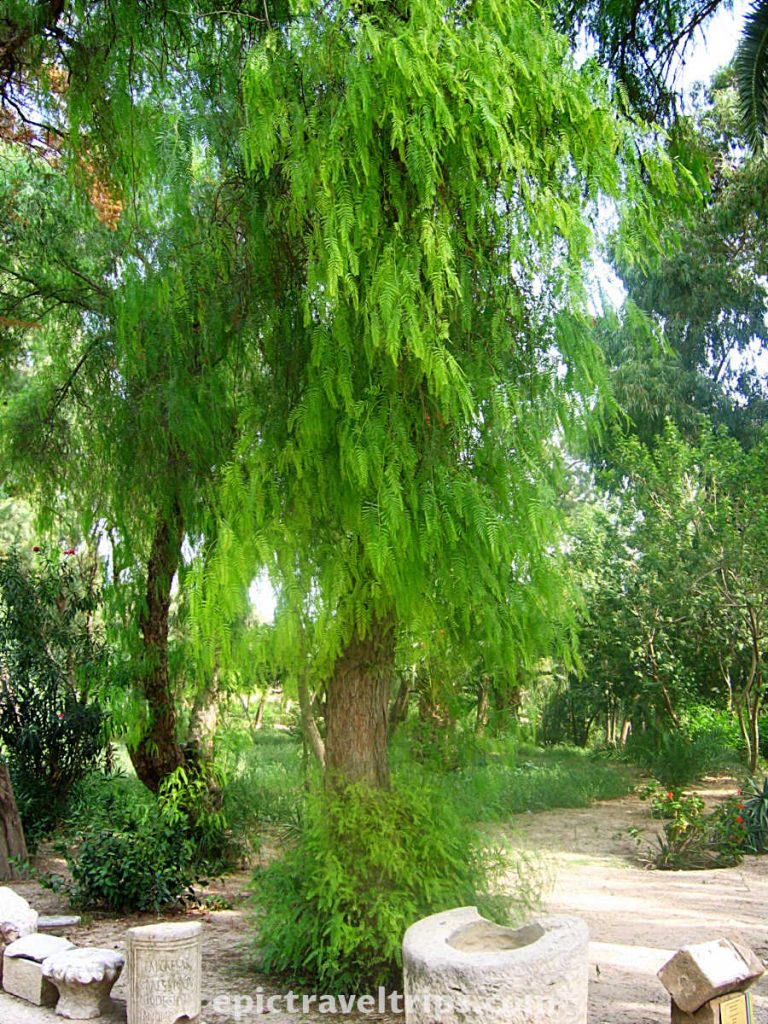Tunis History
Tunis city’s history is long and famous but not known by many. We wouldn’t go too much into detail. Otherwise, it would be a long and separate article. However, we would like to mention a few facts and turning points in Tunis’ history.
Tunis was initially a Berber settlement.
They were mainly engaged in tillage, hunting, and pottery.
Probably the most glorious Tunis period was under the Phenicians and nearby mighty Carthage. However, there are not too many records of Carthage since the Romans destroyed it after the Third Punic War (146 BC).
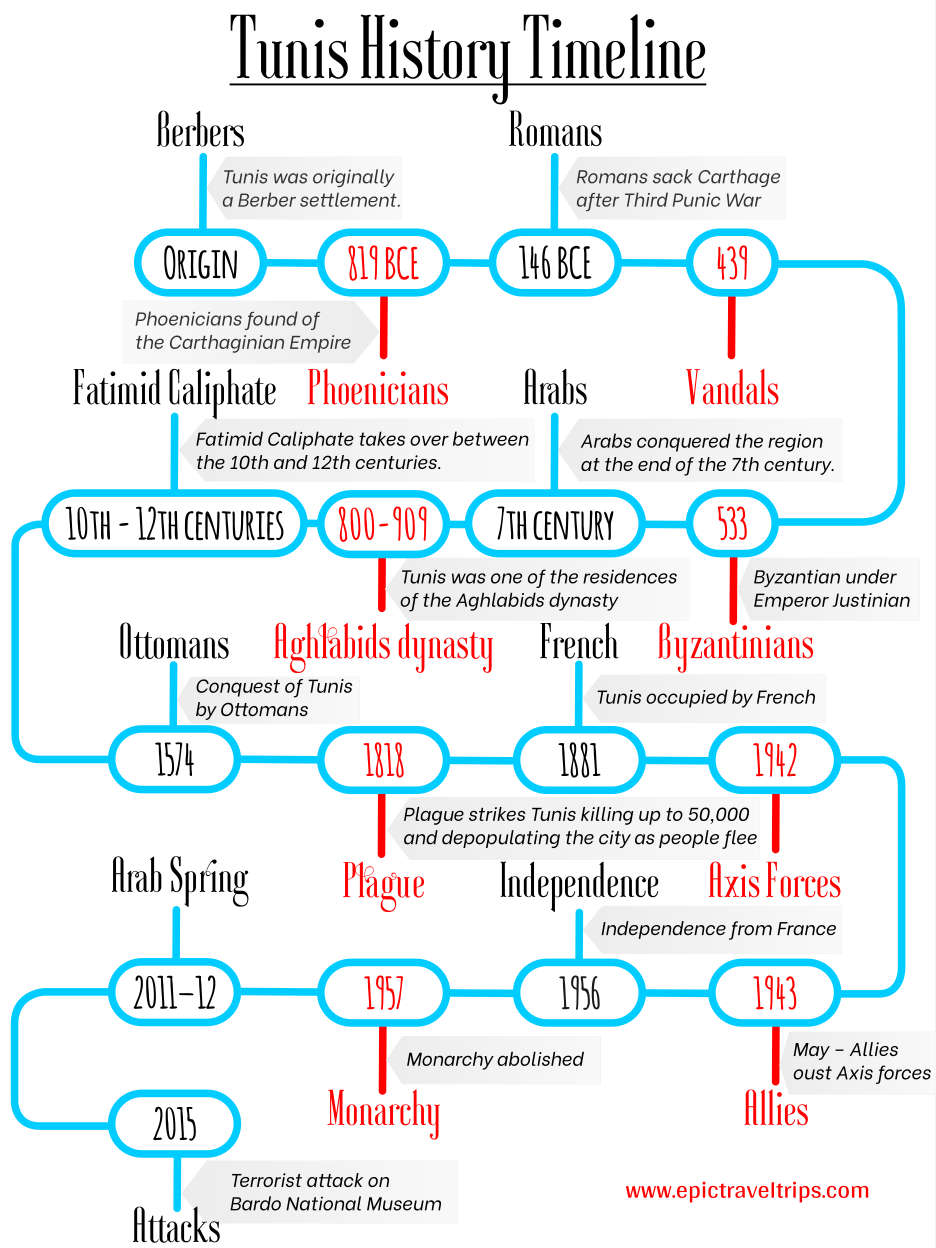
Romans later rebuilt both Tunis and Carthage and became an important agricultural center of the Roman Empire.
After the Romans, many tried to rule the city and the region. Vandal tribes occupied the area in the year 439, Byzantian under Emperor Justinian a century later in the year 533. Arabs conquered the region at the end of the 7th century.
After the rule of the Aghlabids Arab dynasty, Fatimid Caliphate takes over between the 10th and 12th centuries.
Maintaining order and peace in these areas accustomed to war and suffering was not easy. Even Ottoman Empire tried to rule these areas.
In the year 1881, Tunis became a French protectorate. World War I was quiet. However, WWII was the main battlefield between Rommel (The Desert Fox) German army and the British-American coalition.
Finally, Tunis got independence in the year 1956. In 2011-12, the main protests took place during the Arab Spring.
Things To Do In Tunis City
Tunis City Center
Tunis is a modern Mediterranean city and the Republic of Tunis’s capital. Due to its past, it has a charming blending of European and Arabic influences. Stone tile pedestrian pathways with nicely trimmed trees and iconic palm trees. Wide boulevards with many monuments and architectural landmarks.
Monument to Arab sociologist, philosopher, and historian Ibn Khaldun.

The famous Habib Bourguiba clock tower on the central square is a starting point for a nice stroll between the main city boulevard.
The Eye-catching and ornamented facade of the Municipal Theatre of Tunis is a fantastic example of city architecture. During the night, well-designed streetlamps cast yellow light on the Tunis City streets.
If you click this link and make a purchase, we earn a commission at no additional cost to you.

The Medina of Tunis
The Medina of Tunis is a historical quarter of the city with maze-like small narrow streets and many small shops in the souks. Probably the buzziest part of the city where you can buy what we like to say from the needle to locomotive.
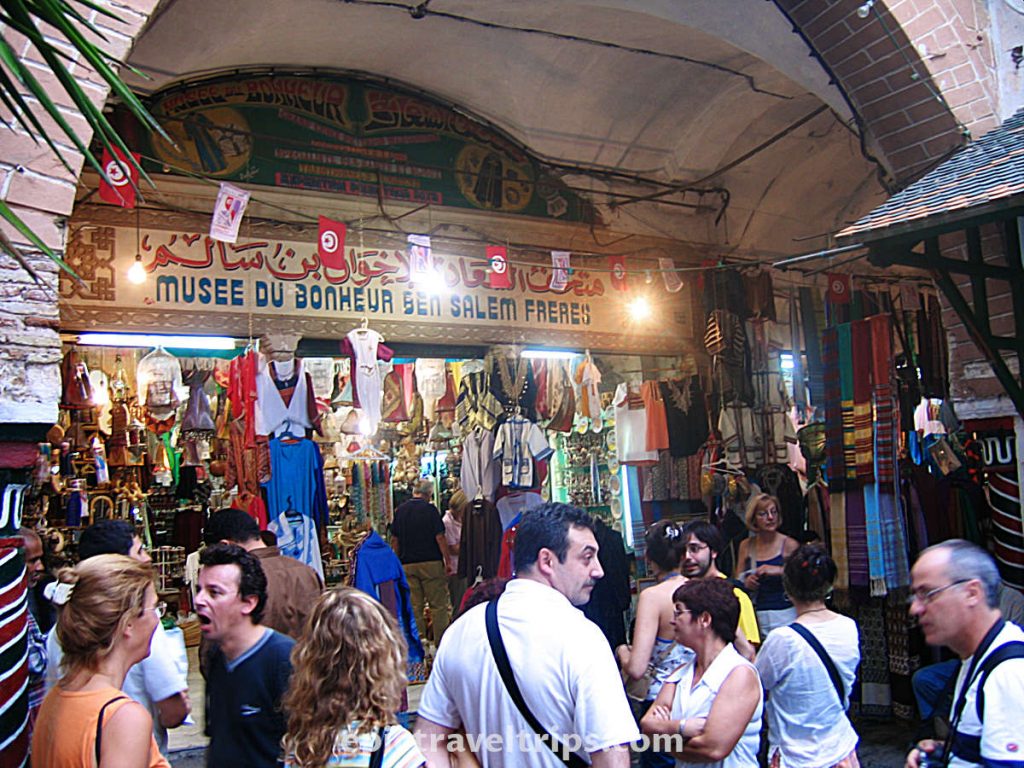

Sidi Bou Said
Sidi Bou Said is the recognizable landmark of Tunis City with its white walls, blue doors, and windows.

Cobble streets are home to souvenir shops, cafes, and art shops but the jasmine, palm trees, roses, and many colorful flowers add charm to them. Otherwise, it would be a concrete and metal blend with shopowners attracting tourists to buy something.

Climbing up the streets and reaching the top of the cliff is a beautiful view over the Mediterranean Sea and harbor below.
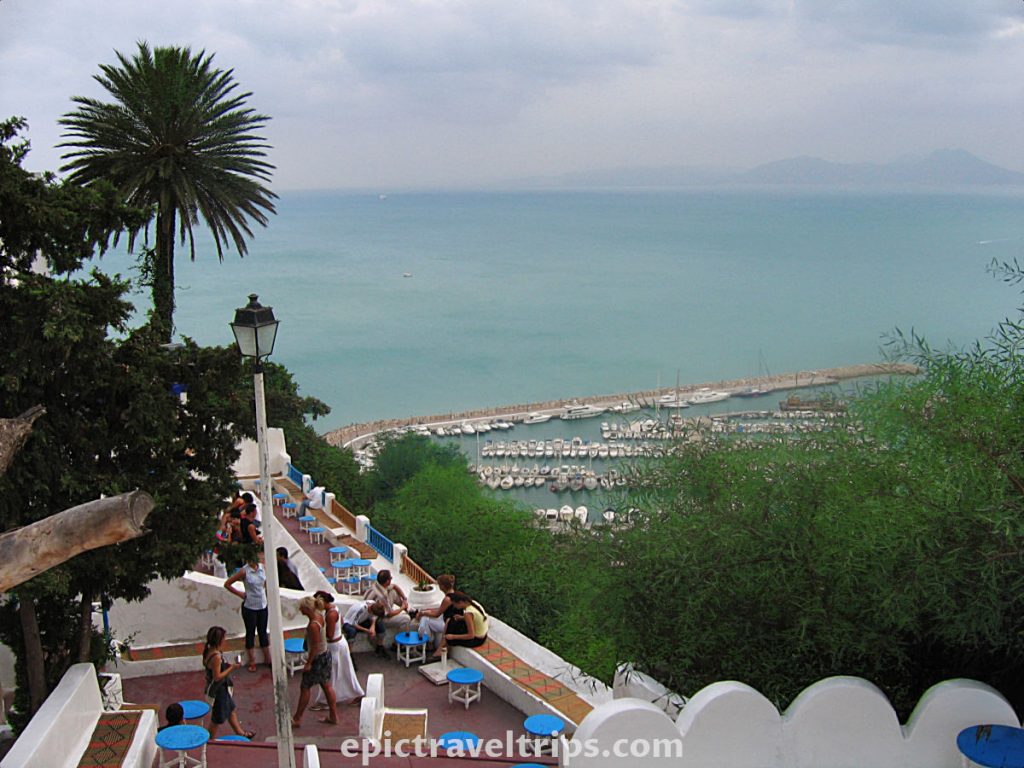
Carthage
Who had never heard of Hannibal (Hannibal ante portas) and the wars between Carthage and the Romans? Carthage was a Phoenician city first. Romans defeated Carthaginians after the Battle of Carthage fought in 146 BC (the Third Punic War). That was the end of Phoenician Carthage.
Later, Romans (Julius Ceaser) rebuilt the Roman Carthage at that location.
Remains of that Carthage we can see even today. However, it is hard to revive the glory of this city from today’s remains.
In one part of the ancient city, there is a blend of ruins and green vegetation.
The other part is on an open field by the sea.
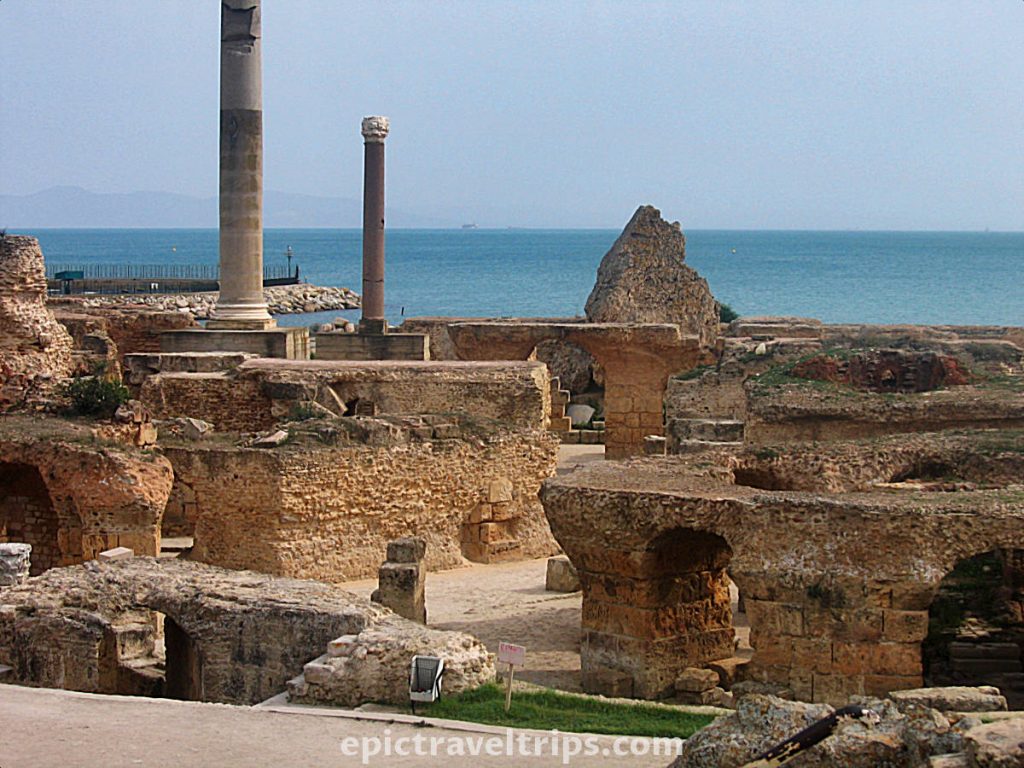
Bardo National Museum
Bardo Museum has a rich collection of Roman mosaics, sculptures, marble statues, terracotta pieces, baptismal fonts, etc. It covers a long period of Tunisian history over several millennia and across several civilizations from various archaeological sites.
The inside of the building is decorated and very interesting as well. Pay attention to painted and gilded ceilings. We noticed colorful ornaments on the walls, ceiling domes, nicely shaped arches, and many decorations.
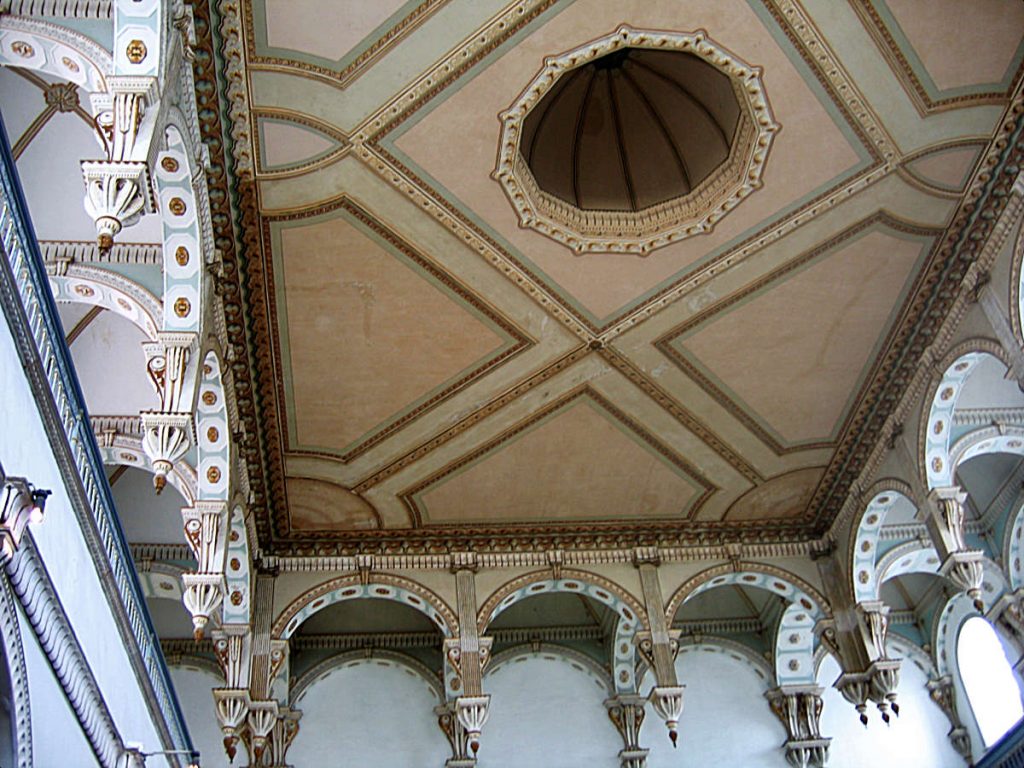
We like to mention a few Roman mosaic pieces such as Ecclesia Mater, Poseidon’s Triumph, and Ulysse et Les Sirènes.
Poseidon’s Triumph Mosaic
Poseidon is a god of the sea(and of water generally) in ancient Greek religion.

Ulysse et Les Sirènes Mosaic
Odysseus instructs his crew to tie him to the mast, telling them to ignore whatever he may say while under the sway of the Siren’s song. One of the most impressive parts of the epic poem Odyssey by Homer

Virgil’s Writing Mosaic
The piece that got our attention was Virgil’s writing while inspired by the muses Clio and Melpomene.

That is how the vandalism term got its birth.
Places Nearby Tunis City
Tunis is rich with many historical locations, landscape beauties, and sandy beaches, so it is really a shame not to visit them as well. We share with you some really beautiful locations, and we hope you will be inspired to visit them.
Sousse
Sousse City is also called the Pearl of the Sahel.

Sousse is popular among tourists and prized for its beaches and resorts. In addition, one will eventually stumble upon many historical sites throughout the city center. To name a few, Medina De Sousse is the old quarter of the Sousse with a maze of shops in small souk streets. Sousse Ribat is within medina walls as well. The Statue of Habibe Bourgibe is in the city center on the big square.
While walking on the streets of Sousse, a visit to shops or restaurants is hardly an avoidable offer.
Port El Kantaoui
We took a funny-colored pinky-violetish tuk-tuk from Sousse to Port el Kantaoui. It is a short ride just 10 km (6,2 mi) north of Sousse.
It is a fashionable spot. We would describe it as Tunisian Saint Tropez.
The tourist complex area consists of white buildings surrounded by interestingly trimmed trees in different shapes, palm trees, and lots of colorful and beautiful flowers. Lots of red Tunisian flags give an additional contrast to the dominant green and white colors.

Paved pathways with red-white or black-white curbs guide our way to a big fountain and tall stone tower with an arch entrance to the port.
If you click this link and make a purchase, we earn a commission at no additional cost to you.
The port is packed with boats and yachts of different shapes, sizes, and colors. All the vessels were sunbathing and waiting for the owners to start a new journey and epic adventure. For us, the yachts were just fantastic decorations to take memorable marina photographs.

Hammamet
It is also known as Yasmine Hammamet due to the jasmine flowers. We stopped by Vincci Lella Baya Hotel to pick up one of our tour guides for the Tunis City Tour.

We did not have time to explore more, but from what we have seen it looks to us as a higher-budget tourist destination. Definitely worth considering as a base for some of our future visits to Tunisia.
If you click this link and make a purchase, we earn a commission at no additional cost to you.
El Jem
We visited El Jem on our Three Day Sahara Tour. The main attraction is a well-preserved ellipse-shaped ancient Roman amphitheater.

It is just a little bit over two hours’ drive by car (204 km or 126.7 mi south of Tunis) and worth visiting for historical and educational reasons.
Kairouan
Kairouan is most well-known for its carpets advertised as Made In Kairouan and the famous Mosque of Uqba. It is an important Muslim pilgrimage site and is considered the fourth most important holy site.
It is just a two-hour drive (160 km or 99,4 mi south of Tunis).

Getting Around in Tunis City
Tunis City is connected by a vast network of public transport, intercity connections, and the international airport.
By Airplane: Tunis City has the international airport Carthage, and it is almost in the heart of the city. We passed by the airport when we were on our way to Sidi Bou Said. It looks big and modern and with two terminals.
Buses and Taxis are options to transport from the airport to the city center. Car Rentals are more appropriate for Tunisia’s mainland further exploration.

By Bus: We had a bus arranged by our travel agency for transport around the city and for the visit to the main attractions. However, yellow buses operate throughout the city. Be aware that information about a destination, route number, and point of departure might be displayed in Arabic.
By Tram (Light Metro): Trams in the capital are part of the Tunis light metro system. It is also known as Metro Leger and it consists of six lines connecting the city suburbs with the center. Trams have a nice green color.

By Train: Trains in Tunisia are cheap but can be overcrowded. The main north-south train line is Tunis-Gabes (via Sousse, and Sfax).
By Foot: We had a really nice pedestrian-friendly stroll between Habib Bourguiba Clocktower and the Ibn Khaldun monument. The pedestrian area is in the huge boulevard between the line of trees.
Where to stay in Tunis City?
We were on a day tour in the city, so we did not need to look for hotels. Being said that we do not have any accommodation to recommend from personal experience.
If you click this link and make a purchase, we earn a commission at no additional cost to you.
Tunis City’s Restaurants and Cafes you have to see!
Café des Nattes
We had a really packed day with visits to many places. However, we had time to visit Café des Nattes, a great location in Sidi Bou Said. Tea with almonds and mint leaves was really tasty and refreshing.

Best time to visit Tunis City
When we mention Tunisia, we usually think about the Mediterranean Sea, sand beaches, sun, the Sahara desert, and everything linked to warmth.
No wonder our suggestion to visit Tunisia City is in the summer months between June and even the beginning of October.

We heard that New Years’ Eve celebrations are popular among Europeans. Tourists coming from countries with long winters are especially interested in this offer.
Costs of traveling in Tunis City
We have set a budget estimate that might be helpful while planning your own trip to Tunis City.
USD ($) – Budget
- Hotel: $17 - $75 per night
- Price per meal: $2.15 - $7.25
- Dish: (Pizza) $3.8
- Activities: $4.25 - $11.2 per day
- Transport: $0.65 - $2.3 per day
- Gas: $0.657 per litre
- Water: $0.16 bottle
- Coffee: $0.65 cup
- Beer: $2 (0.5L)
EUR (€) – Budget
- Hotel: € 15 - € 70 per night
- Price per meal: € 2 - € 6.8
- Dish: (Pizza) € 3.55
- Activities: € 4 - € 10.5 per day
- Transport: € 0.6 - € 2.15 per day
- Gas: € 0.63 per litre
- Water: € 0.15 bottle
- Coffee: € 0.6 cup
- Beer: € 1.85 (0.5L)
GBP (£) – Budget
- Hotel: £12 - £60 per night
- Price per meal: £1.7 - £5.75
- Dish: (Pizza) £3
- Activities: £3.4 - £8.9 per day
- Transport: £0.52 - £1.83 per day
- Gas: £0,52 per litre
- Water: £0.13 bottle
- Coffee: £0.52 cup
- Beer: £1.57 (0.5L)

We wish you an epic trip!




